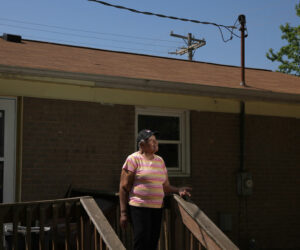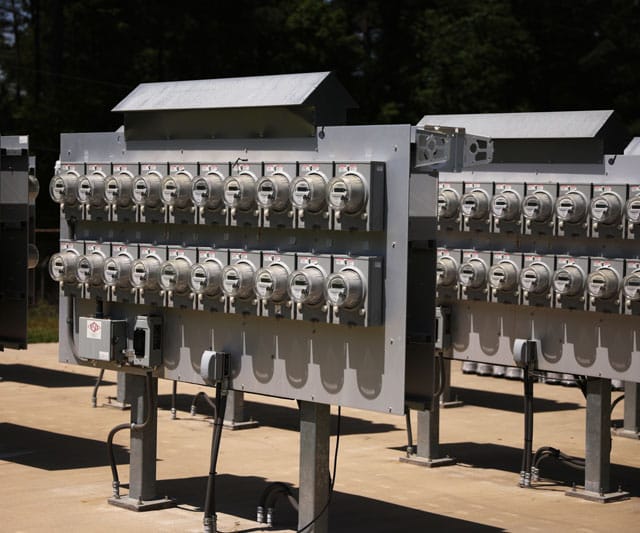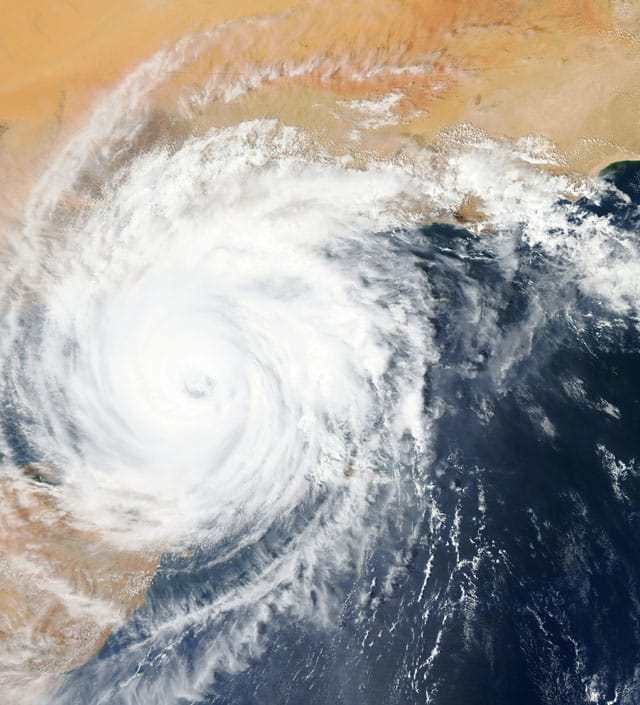When frigid weather caused rolling blackouts on Christmas Eve across North Carolina, Eliana and David Mundula quickly grew worried about their 2 1/2-week-old daughter, whom they had brought home days earlier from a neonatal intensive care unit.
“The temperature was dropping in the house,” said Eliana Mundula, who lives in Matthews, south of Charlotte. “I became angry.”

But her husband pulled out a small gasoline generator a neighbor had convinced them to buy a couple of years earlier, allowing them to use a portable heater and restart their refrigerator, keeping them going for much of the five-hour outage.
North of Charlotte, in the town of Cornelius, Gladys Henderson, an 80-year-old former cafeteria worker, was less fortunate. She did not have a generator and resorted to candles, a flashlight and an old kerosene heater to get through a different recent outage.
“I lose power just about all the time,” Henderson said. “Sometimes it goes off and just stays off.”
Henderson is on the losing end of a new energy divide that is leaving millions of people dangerously exposed to the heat and cold.
As climate change increases the severity of heat waves, cold spells and other extreme weather, blackouts are becoming more common. In the 11 years to 2021, there were 986 weather-related power outages in the United States, nearly twice as many as in the previous 11 years, according to government data analyzed by Climate Central, a nonprofit group of scientists. The average U.S. electric utility customer lost power for nearly eight hours in 2021, according to the Energy Information Administration, more than twice as long as in 2013, the earliest year for which that data is available.
Outages are becoming so common that generators and other backup power devices are seen by some as essential. But many people like Henderson cannot afford generators or the fuel on which they run. Even after strong sales in recent years, Generac, the leading seller of home generators, estimates that fewer than 6% of U.S. homes have a standby generator.
Energy experts warn that power outages will become more common because of extreme weather linked to climate change. And those blackouts will hurt more people as Americans buy electric heat pumps and battery-powered cars to replace furnaces and vehicles that burn fossil fuels — a shift essential to limiting climate change.
“The grids will be more vulnerable,” said Najmedin Meshkati, an engineering professor at the University of Southern California and an expert in disaster response. “That furthers the divide between the haves and the have-nots.”
The old, the frail and people who live in homes that are not well protected or insulated are most vulnerable, along with those who rely on electrically powered medical equipment or take medications that need to be refrigerated.
Power outages make heat, already a major cause of avoidable deaths, even more of a threat, said Brian Stone Jr., a professor at the Georgia Institute of Technology. He has done research estimating how many people in Atlanta, Detroit and Phoenix would be exposed to extreme temperatures during power outages.
“A concurrent event where you have an extensive blackout during a heat wave is the most deadly type of climate threat we can imagine,” he said, noting that the cooling centers in those cities would be able to house only a fraction of the people at greatest risk.
Ashley Ward, a senior policy associate at Duke University’s Nicholas Institute for Energy, Environment & Sustainability, has studied how heat affects communities in North Carolina. Her research indicates that high temperatures cause more preterm births. She said that even healthy people who work in high temperatures often suffer heat-related illnesses, particularly if they cannot cool their homes overnight. “A power outage,” she said, “is, in many cases, a catastrophic event.”
The most recent power crisis in North Carolina, the one on Christmas Eve, occurred when the temperature fell to 9 degrees Fahrenheit in the Charlotte area.

The state’s primary utility, Duke Energy, began cutting power to customers to ensure the grid kept operating after power plants failed and customers cranked up the heat in their homes. About 500,000 homes, or 15% of the company’s customers, lost power in North and South Carolina, the first time the utility used rolling blackouts in the Carolinas.
The Mundulas had been through other weather-related power outages since moving into their suburban home. After renting generators during previous outages, the couple spent $650 to buy one in August 2020 to keep parts of their four-bedroom, 2 1/2-bathroom house powered. A chorus of engines typically fills their neighborhood when the power fails. “It’s just the hum of the generators,” Eliana Mundula said, adding that she never heard generators in the lower-income neighborhood of Greensboro where she grew up.
The couple has considered bigger systems like solar with a battery, but those options would cost a lot.
Henderson, the retired cafeteria worker, lives alone in her three-bedroom home. She relies on family, friends and community groups to help her maintain the house, which gets its electricity from a community-owned utility. Frequent power outages are one of several problems in her historically African American neighborhood, which also floods frequently.
Developers have offered to buy her home, but Henderson wants to stay put, having lived there for 50 years.
“My problem really is the electrical problem,” Henderson said. “It’s very scary.”

Duke said it was aware of the risks people like Henderson faced. The company tracks recurring outages in vulnerable communities to determine if it should bury power lines to reduce the likelihood of blackouts. The company is also developing and testing strategies to ease the strain on the grid when energy demand exceeds supply. Those approaches include having electric cars send power to the grid and installing smart devices that can turn off appliances, reducing energy use.
“So when an extreme weather event hits, we have a grid that can withstand it or quickly recover,” said Lon Huber, a senior vice president for customer solutions at Duke Energy.
Other threats to the grid are harder to protect against.
In early December, somebody shot and damaged two Duke substations in Carthage, roughly 90 miles east of Charlotte, cutting off power to thousands of homes for several days. The emergency services received panicked calls from people whose oxygen machines had stopped working, requiring someone to visit those homes and set up pressurized canisters that don’t require power, said the town’s fire chief, Brian Tyner.
The chief’s home doesn’t have backup power, either, and he estimates that two-thirds of homes in the area do not have generators. “We couldn’t ever justify the price,” he said.
Backup power systems can be as small as portable gasoline generators that can cost $500 or less. Often found at construction sites and campgrounds, these devices can power only a few devices at a time. Whole-home systems fueled with propane, natural gas or diesel can provide power for days as long as there is fuel available, but these generators start at around $10,000, including installation, and can cost much more for bigger homes.
Solar panels paired with batteries can provide emissions-free power, but they cost tens of thousands of dollars and typically cannot provide enough to run big appliances and heat pumps for more than a few hours. Those systems are also less reliable during cloudy, rainy or snowy days when there isn’t enough sunlight to fully recharge batteries.
Some homeowners who are eager to cut their carbon emissions, reduce their electric bills and gain independence from the electric grid have combined various energy systems, often at a substantial cost.
Annie Dudley, a statistician from Chapel Hill, North Carolina, slashed her energy consumption a few years ago. She installed a geothermal system, which uses the earth’s steady temperature to help heat and cool her home, replacing an aging system that came with the house. She later added 35 solar panels on her roof and two Tesla home batteries, which can provide enough power to meet most of her needs, including charging an electric Volkswagen Golf.
“The neighborhood has lost power a whole lot, but I have not,” Dudley said.
She spent about $52,000 on her solar panels and batteries, but $21,600 of that cost was defrayed by rebates and tax credits. Dudley estimates that her utility bills are about $2,300 a year lower because of that investment and her geothermal system.
Generator companies believe that growing electricity usage and the threat of outages will keep demand high for their products.
Last year, Generac had $2.8 billion in sales to U.S. homeowners, 250% more than in 2017. In recent years, many people bought generators to ensure outages would not interrupt their ability to work from home, said Aaron Jagdfeld, CEO of Generac, which is based in Waukesha, Wisconsin. Many people also bought generators because of severe weather, including an extreme heat wave in 2021 in the Pacific Northwest, and winter storm Uri, which caused days of blackouts in Texas and killed an estimated 246 people.
“People are thinking about this,” Jagdfeld said, “in the context of the broader changes in climate and how that may be impacting not only the reliability of power but the things that they need that power provides.”
c.2023 The New York Times Company. This article originally appeared in The New York Times.







